Homeschool Unit Studies
The Learning Tree
A Model For Homeschool Unit Studies
Maximize your students' success with the Learning Tree model for homeschool unit studies.
A Model For Homeschool Unit Studies
Maximize your students' success with the Learning Tree model for homeschool unit studies.
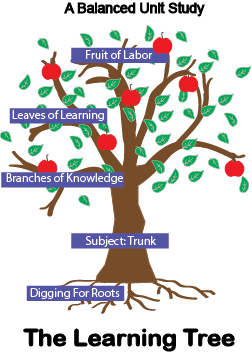

With this model, we visualize the different parts of the learning process as a part of a tree. Your tree can be on a single sheet of paper or cover a door or wall of your house. Students share in the planning and executing of their unit.
The Trunk
Unit Study Topic
The trunk is the topic of your homeschool unit studies.Your topic might be "birds", or "Ancient Egypt," "soccer," or "presidential elections."
Roots
Resources
The roots are your resources. You can think of it as a living bibliography. Of course it will include all books you read.It may include internet sites, educational games, field trips, magazine articles, experiments and a host of other activities from which your students learn.
Branches
Knowledge and Objectives
The branches are the main areas of content to be learned. Let's use a unit study on "birds" as an example. The branches might be:- Illustrate the life cycle of a bird.
- Describe six different categories of birds.
- Identify the main parts of a bird's anatomy.
- Trace the migration pattern of several birds.
The content has measurable objectives. There are specific things the student will able to do at the end of the unit. They may start their unit studies knowing what they need to learn.
Of course, sometimes we discover more branches of knowledge as we pursue a unit. That's one of the great parts of unit studies - the fascination of discovery.
Fruit
Student Accomplishments
The fruit is the outcome your student produces in the course of completing their unit. It should have a creative aspect to it.For the study of birds, the student completed the following:
- Wrote a paper on swans.
- Developed a poster on the life cycle of swans.
- Used a field guide to identify five birds in the back yard.
- Went on a local bird watching walk and drew a map.
- Built a birdhouse and bird feeder for the backyard.
- Made a clay model of a wood-pecker.
Leaves
Learning Activities
Students can earn points for the different activities they do. Ten points can be earned for an hour of work. You can also give one point for every page they read.Students can be required to do a minimum number of points for each unit study. We recommend 100 points. As the students get older, the requirements may become more detailed.
Here is an example which we use:
- Minimum Requirements - Total 100 points
- Writing: 25 points
- Reading: 50 Points
Get The Learning Tree Template
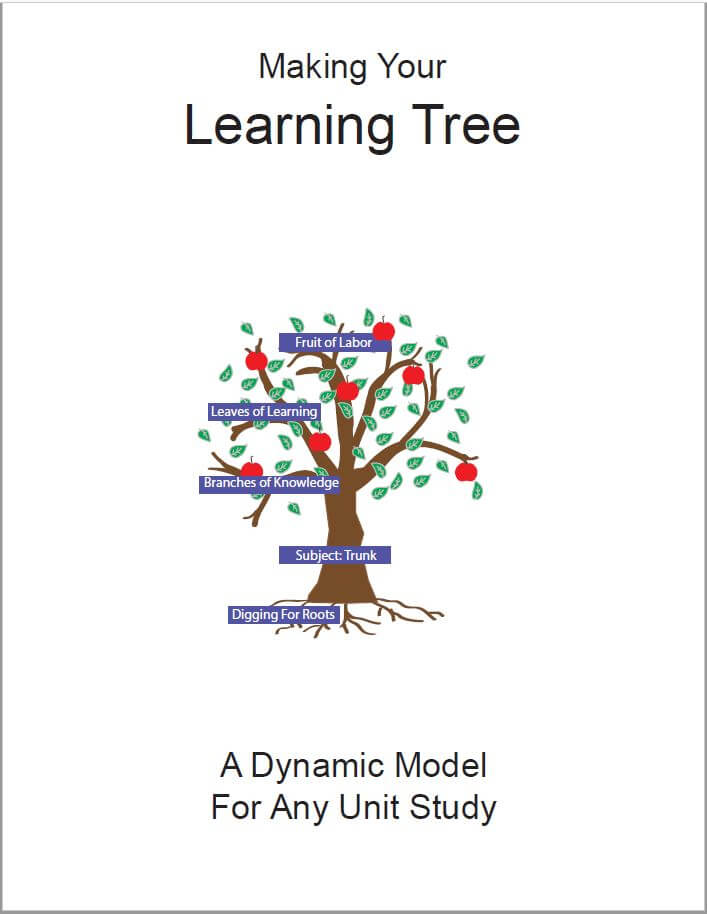
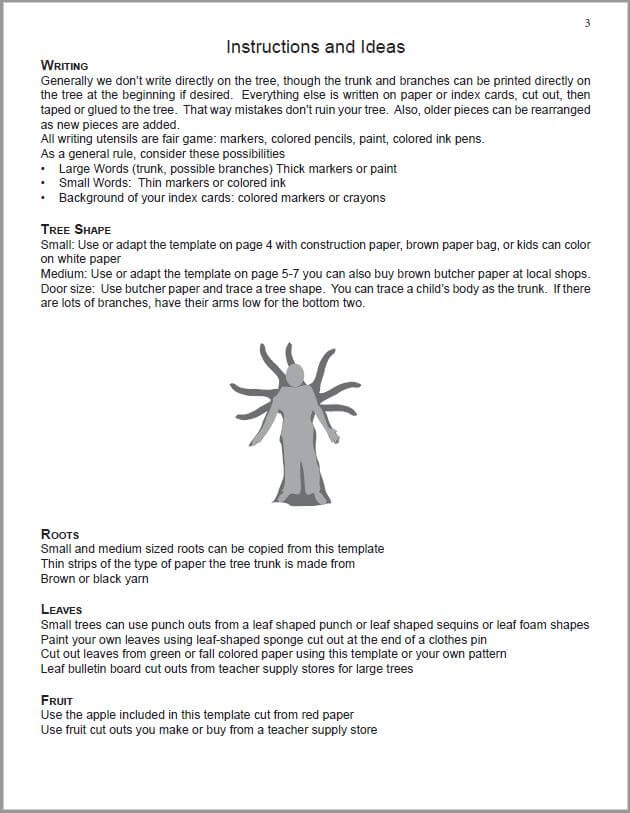
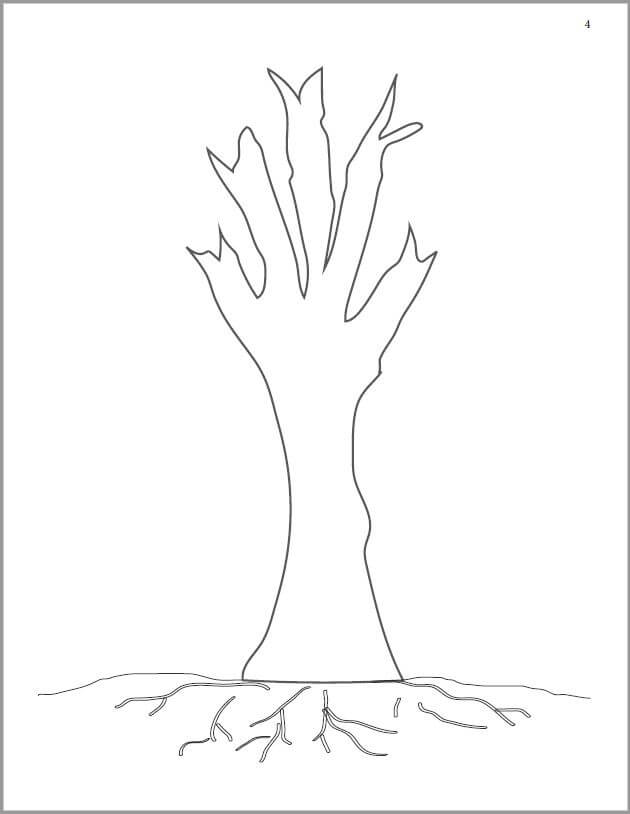
Instructions and Templates for Small & Medium Trees
$1.99 Download - 7 pages
![]()
Displaying Your Learning Tree
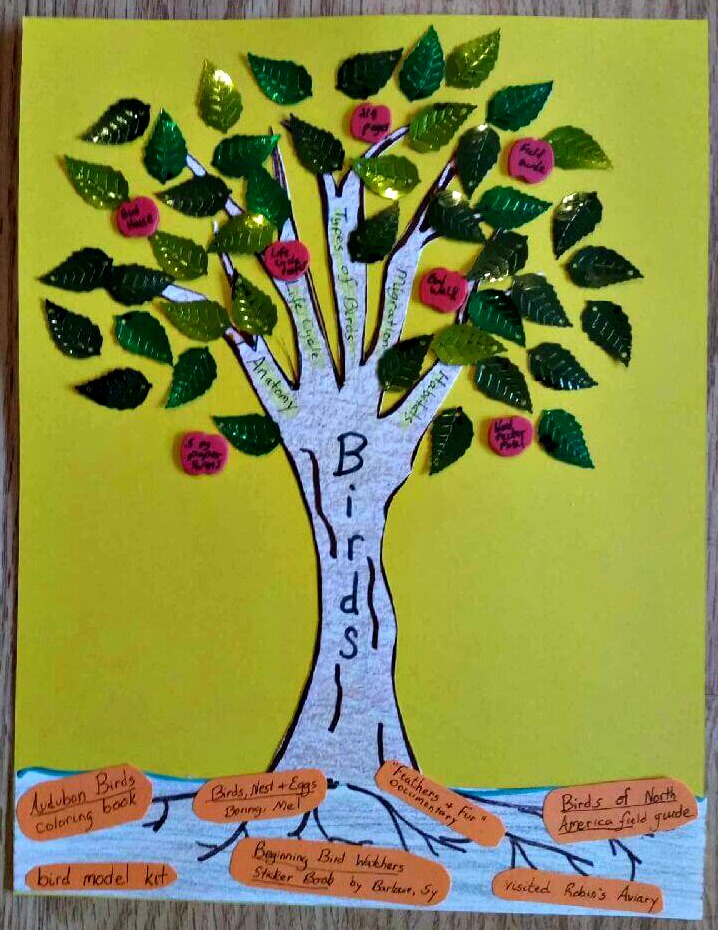 How can your Learning Tree be displayed?
How can your Learning Tree be displayed?
- LARGE DISPLAYS
- Wall
- Door
- Advantages: Easy to see, easy for students to write on leaves and fruit.
- Disadvantages: It is gone when you take it down. (Unless you take a photograph.) May interfere with your decor.
- MEDIUM DISPLAYS
- Posterboard
- Bulletin Board
- Advantages: Doesn't take up as much space.
- Disadvantages: Doesn't keep well as a souvenir. Hard to find pre-made leaves and fruit.
- SMALL DISPLAYS
- 8.5 x 11 inch paper or cardstock
- Back or front of lapbook
- Advantages: Takes no space; keeps as souvenir.
- Disadvantages: Hard to read tiny print; hard for students to write small.
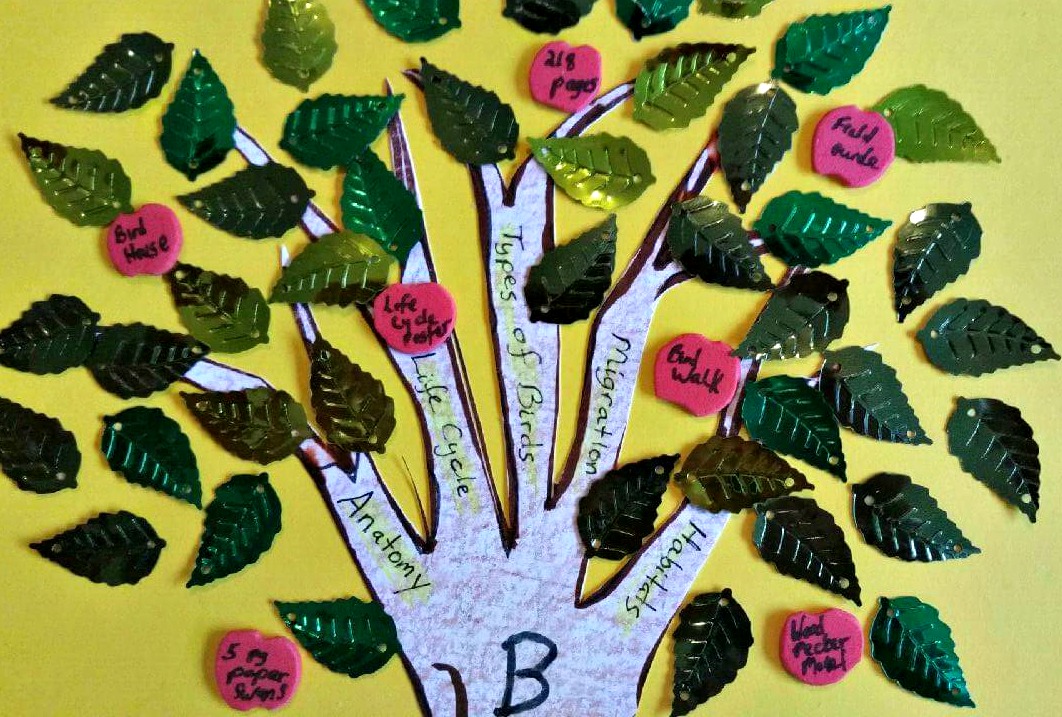
How the Learning Tree Developed
Unit studies promote the type of self-learning that is at the heart of the homeschool movement. Even though I am an advocate of unit studies, I often had frustrations when we used them in the early years. Challenges included:- There was more content than we could cover. I often felt guilty that we had not "done it all."
- Sometimes my students became academically lazy when tests were not administered. Sure, they enjoyed the projects; but I often could not detect any academic learning taking place. "Read and forget" seemed to be the motto of some kids.
- I wanted my students to take responsibility for planning and carrying out their own learning. But some students need more discipline and requirements than others.
- There needed to be a minimum requirement for all students, and a system of reward for academic achievement above the minimum.
Little by little over the years, this model took shape. I learned from others and adapted different models.
Why Do We Use a Tree?
Originally I had a more "mechanical" model with "input" and "output." Even if it sounds a bit too mechanical, stick with it for a minute.Inputs
Some of learning activities are "input." These are activities and resources that allow students to learn new information.Outputs
Other learning activities are "outputs" which demonstrated the student's acquired skills, knowledge, and analysis.Obviously, all learning entails input and output. This model assisted students to recognize that they needed to balance the different types of learning activities, and do a minimum number of both.
But kids aren't robots. Learning is more dynamic. Sure, reading is an input and writing a paper is an output. But what is a field trip that produces a picture book?
We needed a less technical and more dynamic model that changed as they changed.
Thus the model of a tree which grows and changes developed.

Get The Learning Tree Template



Instructions and Templates for Small & Medium Trees
$1.99 Download - 7 pages
![]()
The Learning Tree Model In Action

Each objective for the twelve units is like the branches of knowledge. The students engage in a wide variety of hands-on activities to learn about the topic. Along with reading three printed resources, these activities are the root of the study.
The MatchCards provide the branches and demonstrate that the students know the content.
And what is the fruit of their labor? Students complete a project, put together lapbook or unit study booklet, complete a science fair project, or develop their own method of demonstrating their accomplishments.
About Our Site
Hands-On Learning













